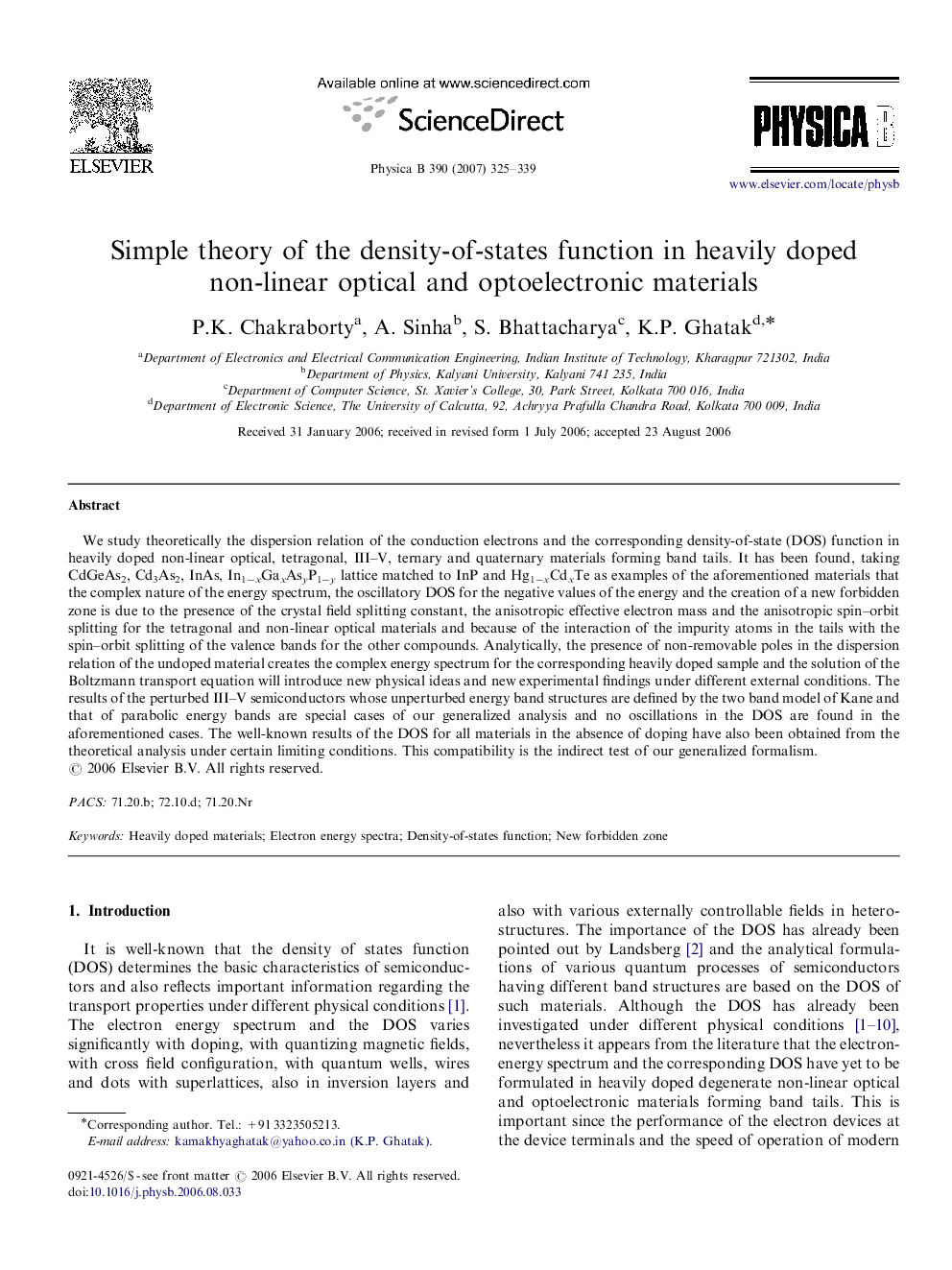| Article ID | Journal | Published Year | Pages | File Type |
|---|---|---|---|---|
| 1816065 | Physica B: Condensed Matter | 2007 | 15 Pages |
Abstract
We study theoretically the dispersion relation of the conduction electrons and the corresponding density-of-state (DOS) function in heavily doped non-linear optical, tetragonal, III-V, ternary and quaternary materials forming band tails. It has been found, taking CdGeAs2, Cd3As2, InAs, In1âxGaxAsyP1ây lattice matched to InP and Hg1âxCdxTe as examples of the aforementioned materials that the complex nature of the energy spectrum, the oscillatory DOS for the negative values of the energy and the creation of a new forbidden zone is due to the presence of the crystal field splitting constant, the anisotropic effective electron mass and the anisotropic spin-orbit splitting for the tetragonal and non-linear optical materials and because of the interaction of the impurity atoms in the tails with the spin-orbit splitting of the valence bands for the other compounds. Analytically, the presence of non-removable poles in the dispersion relation of the undoped material creates the complex energy spectrum for the corresponding heavily doped sample and the solution of the Boltzmann transport equation will introduce new physical ideas and new experimental findings under different external conditions. The results of the perturbed III-V semiconductors whose unperturbed energy band structures are defined by the two band model of Kane and that of parabolic energy bands are special cases of our generalized analysis and no oscillations in the DOS are found in the aforementioned cases. The well-known results of the DOS for all materials in the absence of doping have also been obtained from the theoretical analysis under certain limiting conditions. This compatibility is the indirect test of our generalized formalism.
Related Topics
Physical Sciences and Engineering
Physics and Astronomy
Condensed Matter Physics
Authors
P.K. Chakraborty, A. Sinha, S. Bhattacharya, K.P. Ghatak,
